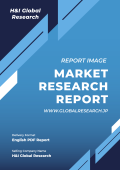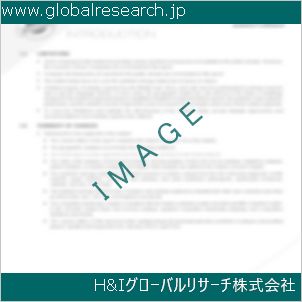1 Industrial IoT Sensors Market Overview
1.1 Product Definition
1.2 Industrial IoT Sensors Segment by Type
1.2.1 Global Industrial IoT Sensors Market Value Growth Rate Analysis by Type 2022 VS 2029
1.2.2 Pressure Sensor
1.2.3 Environmental Sensor
1.2.4 Optical Sensor
1.2.5 Chemical Sensor
1.2.6 Motion Sensor
1.2.7 Others
1.3 Industrial IoT Sensors Segment by Application
1.3.1 Global Industrial IoT Sensors Market Value Growth Rate Analysis by Application: 2022 VS 2029
1.3.2 Energy & Power
1.3.3 Oil & Gas
1.3.4 Mining
1.3.5 Chemical
1.3.6 Manufacturing
1.3.7 Others
1.4 Global Market Growth Prospects
1.4.1 Global Industrial IoT Sensors Production Value Estimates and Forecasts (2018-2029)
1.4.2 Global Industrial IoT Sensors Production Capacity Estimates and Forecasts (2018-2029)
1.4.3 Global Industrial IoT Sensors Production Estimates and Forecasts (2018-2029)
1.4.4 Global Industrial IoT Sensors Market Average Price Estimates and Forecasts (2018-2029)
1.5 Assumptions and Limitations
2 Market Competition by Manufacturers
2.1 Global Industrial IoT Sensors Production Market Share by Manufacturers (2018-2023)
2.2 Global Industrial IoT Sensors Production Value Market Share by Manufacturers (2018-2023)
2.3 Global Key Players of Industrial IoT Sensors, Industry Ranking, 2021 VS 2022 VS 2023
2.4 Global Industrial IoT Sensors Market Share by Company Type (Tier 1, Tier 2 and Tier 3)
2.5 Global Industrial IoT Sensors Average Price by Manufacturers (2018-2023)
2.6 Global Key Manufacturers of Industrial IoT Sensors, Manufacturing Base Distribution and Headquarters
2.7 Global Key Manufacturers of Industrial IoT Sensors, Product Offered and Application
2.8 Global Key Manufacturers of Industrial IoT Sensors, Date of Enter into This Industry
2.9 Industrial IoT Sensors Market Competitive Situation and Trends
2.9.1 Industrial IoT Sensors Market Concentration Rate
2.9.2 Global 5 and 10 Largest Industrial IoT Sensors Players Market Share by Revenue
2.10 Mergers & Acquisitions, Expansion
3 Industrial IoT Sensors Production by Region
3.1 Global Industrial IoT Sensors Production Value Estimates and Forecasts by Region: 2018 VS 2022 VS 2029
3.2 Global Industrial IoT Sensors Production Value by Region (2018-2029)
3.2.1 Global Industrial IoT Sensors Production Value Market Share by Region (2018-2023)
3.2.2 Global Forecasted Production Value of Industrial IoT Sensors by Region (2024-2029)
3.3 Global Industrial IoT Sensors Production Estimates and Forecasts by Region: 2018 VS 2022 VS 2029
3.4 Global Industrial IoT Sensors Production by Region (2018-2029)
3.4.1 Global Industrial IoT Sensors Production Market Share by Region (2018-2023)
3.4.2 Global Forecasted Production of Industrial IoT Sensors by Region (2024-2029)
3.5 Global Industrial IoT Sensors Market Price Analysis by Region (2018-2023)
3.6 Global Industrial IoT Sensors Production and Value, Year-over-Year Growth
3.6.1 North America Industrial IoT Sensors Production Value Estimates and Forecasts (2018-2029)
3.6.2 Europe Industrial IoT Sensors Production Value Estimates and Forecasts (2018-2029)
3.6.3 China Industrial IoT Sensors Production Value Estimates and Forecasts (2018-2029)
3.6.4 Japan Industrial IoT Sensors Production Value Estimates and Forecasts (2018-2029)
3.6.5 South Korea Industrial IoT Sensors Production Value Estimates and Forecasts (2018-2029)
4 Industrial IoT Sensors Consumption by Region
4.1 Global Industrial IoT Sensors Consumption Estimates and Forecasts by Region: 2018 VS 2022 VS 2029
4.2 Global Industrial IoT Sensors Consumption by Region (2018-2029)
4.2.1 Global Industrial IoT Sensors Consumption by Region (2018-2023)
4.2.2 Global Industrial IoT Sensors Forecasted Consumption by Region (2024-2029)
4.3 North America
4.3.1 North America Industrial IoT Sensors Consumption Growth Rate by Country: 2018 VS 2022 VS 2029
4.3.2 North America Industrial IoT Sensors Consumption by Country (2018-2029)
4.3.3 United States
4.3.4 Canada
4.4 Europe
4.4.1 Europe Industrial IoT Sensors Consumption Growth Rate by Country: 2018 VS 2022 VS 2029
4.4.2 Europe Industrial IoT Sensors Consumption by Country (2018-2029)
4.4.3 Germany
4.4.4 France
4.4.5 U.K.
4.4.6 Italy
4.4.7 Russia
4.5 Asia Pacific
4.5.1 Asia Pacific Industrial IoT Sensors Consumption Growth Rate by Region: 2018 VS 2022 VS 2029
4.5.2 Asia Pacific Industrial IoT Sensors Consumption by Region (2018-2029)
4.5.3 China
4.5.4 Japan
4.5.5 South Korea
4.5.6 China Taiwan
4.5.7 Southeast Asia
4.5.8 India
4.6 Latin America, Middle East & Africa
4.6.1 Latin America, Middle East & Africa Industrial IoT Sensors Consumption Growth Rate by Country: 2018 VS 2022 VS 2029
4.6.2 Latin America, Middle East & Africa Industrial IoT Sensors Consumption by Country (2018-2029)
4.6.3 Mexico
4.6.4 Brazil
4.6.5 Turkey
5 Segment by Type
5.1 Global Industrial IoT Sensors Production by Type (2018-2029)
5.1.1 Global Industrial IoT Sensors Production by Type (2018-2023)
5.1.2 Global Industrial IoT Sensors Production by Type (2024-2029)
5.1.3 Global Industrial IoT Sensors Production Market Share by Type (2018-2029)
5.2 Global Industrial IoT Sensors Production Value by Type (2018-2029)
5.2.1 Global Industrial IoT Sensors Production Value by Type (2018-2023)
5.2.2 Global Industrial IoT Sensors Production Value by Type (2024-2029)
5.2.3 Global Industrial IoT Sensors Production Value Market Share by Type (2018-2029)
5.3 Global Industrial IoT Sensors Price by Type (2018-2029)
6 Segment by Application
6.1 Global Industrial IoT Sensors Production by Application (2018-2029)
6.1.1 Global Industrial IoT Sensors Production by Application (2018-2023)
6.1.2 Global Industrial IoT Sensors Production by Application (2024-2029)
6.1.3 Global Industrial IoT Sensors Production Market Share by Application (2018-2029)
6.2 Global Industrial IoT Sensors Production Value by Application (2018-2029)
6.2.1 Global Industrial IoT Sensors Production Value by Application (2018-2023)
6.2.2 Global Industrial IoT Sensors Production Value by Application (2024-2029)
6.2.3 Global Industrial IoT Sensors Production Value Market Share by Application (2018-2029)
6.3 Global Industrial IoT Sensors Price by Application (2018-2029)
7 Key Companies Profiled
7.1 Bosch
7.1.1 Bosch Industrial IoT Sensors Corporation Information
7.1.2 Bosch Industrial IoT Sensors Product Portfolio
7.1.3 Bosch Industrial IoT Sensors Production, Value, Price and Gross Margin (2018-2023)
7.1.4 Bosch Main Business and Markets Served
7.1.5 Bosch Recent Developments/Updates
7.2 Honeywell
7.2.1 Honeywell Industrial IoT Sensors Corporation Information
7.2.2 Honeywell Industrial IoT Sensors Product Portfolio
7.2.3 Honeywell Industrial IoT Sensors Production, Value, Price and Gross Margin (2018-2023)
7.2.4 Honeywell Main Business and Markets Served
7.2.5 Honeywell Recent Developments/Updates
7.3 NXP
7.3.1 NXP Industrial IoT Sensors Corporation Information
7.3.2 NXP Industrial IoT Sensors Product Portfolio
7.3.3 NXP Industrial IoT Sensors Production, Value, Price and Gross Margin (2018-2023)
7.3.4 NXP Main Business and Markets Served
7.3.5 NXP Recent Developments/Updates
7.4 Infineon
7.4.1 Infineon Industrial IoT Sensors Corporation Information
7.4.2 Infineon Industrial IoT Sensors Product Portfolio
7.4.3 Infineon Industrial IoT Sensors Production, Value, Price and Gross Margin (2018-2023)
7.4.4 Infineon Main Business and Markets Served
7.4.5 Infineon Recent Developments/Updates
7.5 Analog Devices
7.5.1 Analog Devices Industrial IoT Sensors Corporation Information
7.5.2 Analog Devices Industrial IoT Sensors Product Portfolio
7.5.3 Analog Devices Industrial IoT Sensors Production, Value, Price and Gross Margin (2018-2023)
7.5.4 Analog Devices Main Business and Markets Served
7.5.5 Analog Devices Recent Developments/Updates
7.6 Panasonic
7.6.1 Panasonic Industrial IoT Sensors Corporation Information
7.6.2 Panasonic Industrial IoT Sensors Product Portfolio
7.6.3 Panasonic Industrial IoT Sensors Production, Value, Price and Gross Margin (2018-2023)
7.6.4 Panasonic Main Business and Markets Served
7.6.5 Panasonic Recent Developments/Updates
7.7 InvenSense
7.7.1 InvenSense Industrial IoT Sensors Corporation Information
7.7.2 InvenSense Industrial IoT Sensors Product Portfolio
7.7.3 InvenSense Industrial IoT Sensors Production, Value, Price and Gross Margin (2018-2023)
7.7.4 InvenSense Main Business and Markets Served
7.7.5 InvenSense Recent Developments/Updates
7.8 TI
7.8.1 TI Industrial IoT Sensors Corporation Information
7.8.2 TI Industrial IoT Sensors Product Portfolio
7.8.3 TI Industrial IoT Sensors Production, Value, Price and Gross Margin (2018-2023)
7.8.4 TI Main Business and Markets Served
7.7.5 TI Recent Developments/Updates
7.9 Silicon Laboratories
7.9.1 Silicon Laboratories Industrial IoT Sensors Corporation Information
7.9.2 Silicon Laboratories Industrial IoT Sensors Product Portfolio
7.9.3 Silicon Laboratories Industrial IoT Sensors Production, Value, Price and Gross Margin (2018-2023)
7.9.4 Silicon Laboratories Main Business and Markets Served
7.9.5 Silicon Laboratories Recent Developments/Updates
7.10 ABB
7.10.1 ABB Industrial IoT Sensors Corporation Information
7.10.2 ABB Industrial IoT Sensors Product Portfolio
7.10.3 ABB Industrial IoT Sensors Production, Value, Price and Gross Margin (2018-2023)
7.10.4 ABB Main Business and Markets Served
7.10.5 ABB Recent Developments/Updates
7.11 STMicroelectronics
7.11.1 STMicroelectronics Industrial IoT Sensors Corporation Information
7.11.2 STMicroelectronics Industrial IoT Sensors Product Portfolio
7.11.3 STMicroelectronics Industrial IoT Sensors Production, Value, Price and Gross Margin (2018-2023)
7.11.4 STMicroelectronics Main Business and Markets Served
7.11.5 STMicroelectronics Recent Developments/Updates
7.12 TE Connectivity
7.12.1 TE Connectivity Industrial IoT Sensors Corporation Information
7.12.2 TE Connectivity Industrial IoT Sensors Product Portfolio
7.12.3 TE Connectivity Industrial IoT Sensors Production, Value, Price and Gross Margin (2018-2023)
7.12.4 TE Connectivity Main Business and Markets Served
7.12.5 TE Connectivity Recent Developments/Updates
7.13 Huagong Tech
7.13.1 Huagong Tech Industrial IoT Sensors Corporation Information
7.13.2 Huagong Tech Industrial IoT Sensors Product Portfolio
7.13.3 Huagong Tech Industrial IoT Sensors Production, Value, Price and Gross Margin (2018-2023)
7.13.4 Huagong Tech Main Business and Markets Served
7.13.5 Huagong Tech Recent Developments/Updates
7.14 Sensirion
7.14.1 Sensirion Industrial IoT Sensors Corporation Information
7.14.2 Sensirion Industrial IoT Sensors Product Portfolio
7.14.3 Sensirion Industrial IoT Sensors Production, Value, Price and Gross Margin (2018-2023)
7.14.4 Sensirion Main Business and Markets Served
7.14.5 Sensirion Recent Developments/Updates
7.15 Zhonghang Electronic Measuring Instruments
7.15.1 Zhonghang Electronic Measuring Instruments Industrial IoT Sensors Corporation Information
7.15.2 Zhonghang Electronic Measuring Instruments Industrial IoT Sensors Product Portfolio
7.15.3 Zhonghang Electronic Measuring Instruments Industrial IoT Sensors Production, Value, Price and Gross Margin (2018-2023)
7.15.4 Zhonghang Electronic Measuring Instruments Main Business and Markets Served
7.15.5 Zhonghang Electronic Measuring Instruments Recent Developments/Updates
7.16 Vishay
7.16.1 Vishay Industrial IoT Sensors Corporation Information
7.16.2 Vishay Industrial IoT Sensors Product Portfolio
7.16.3 Vishay Industrial IoT Sensors Production, Value, Price and Gross Margin (2018-2023)
7.16.4 Vishay Main Business and Markets Served
7.16.5 Vishay Recent Developments/Updates
7.17 Hanwei Electronics
7.17.1 Hanwei Electronics Industrial IoT Sensors Corporation Information
7.17.2 Hanwei Electronics Industrial IoT Sensors Product Portfolio
7.17.3 Hanwei Electronics Industrial IoT Sensors Production, Value, Price and Gross Margin (2018-2023)
7.17.4 Hanwei Electronics Main Business and Markets Served
7.17.5 Hanwei Electronics Recent Developments/Updates
7.18 Semtech
7.18.1 Semtech Industrial IoT Sensors Corporation Information
7.18.2 Semtech Industrial IoT Sensors Product Portfolio
7.18.3 Semtech Industrial IoT Sensors Production, Value, Price and Gross Margin (2018-2023)
7.18.4 Semtech Main Business and Markets Served
7.18.5 Semtech Recent Developments/Updates
7.19 Omron
7.19.1 Omron Industrial IoT Sensors Corporation Information
7.19.2 Omron Industrial IoT Sensors Product Portfolio
7.19.3 Omron Industrial IoT Sensors Production, Value, Price and Gross Margin (2018-2023)
7.19.4 Omron Main Business and Markets Served
7.19.5 Omron Recent Developments/Updates
8 Industry Chain and Sales Channels Analysis
8.1 Industrial IoT Sensors Industry Chain Analysis
8.2 Industrial IoT Sensors Key Raw Materials
8.2.1 Key Raw Materials
8.2.2 Raw Materials Key Suppliers
8.3 Industrial IoT Sensors Production Mode & Process
8.4 Industrial IoT Sensors Sales and Marketing
8.4.1 Industrial IoT Sensors Sales Channels
8.4.2 Industrial IoT Sensors Distributors
8.5 Industrial IoT Sensors Customers
9 Industrial IoT Sensors Market Dynamics
9.1 Industrial IoT Sensors Industry Trends
9.2 Industrial IoT Sensors Market Drivers
9.3 Industrial IoT Sensors Market Challenges
9.4 Industrial IoT Sensors Market Restraints
10 Research Finding and Conclusion
11 Methodology and Data Source
11.1 Methodology/Research Approach
11.1.1 Research Programs/Design
11.1.2 Market Size Estimation
11.1.3 Market Breakdown and Data Triangulation
11.2 Data Source
11.2.1 Secondary Sources
11.2.2 Primary Sources
11.3 Author List
11.4 Disclaimer
| ※参考情報 産業用IoTセンサーは、インターネットを介してデータを収集、送信、分析するセンサーのことを指します。これらのセンサーは主に製造業や物流、エネルギー管理、農業、インフラ整備などの産業において使用されます。その目的は、リアルタイムでのデータ収集と分析を通じて、効率的な運営を実現し、コスト削減や生産性向上を図ることです。 産業用IoTセンサーの主要な特徴の一つは、数多くの異なる環境や条件下で機能することができる柔軟性です。例えば、温度、湿度、圧力、振動、音など、さまざまな物理的特性を測定することができます。さらに、これらのセンサーは通常、堅牢な設計がされており、過酷な環境下でも長期間にわたり安定した性能を発揮します。 産業用IoTセンサーの種類は多岐にわたり、用途によってさまざまなセンサーが存在します。環境センサーは、気温、湿度、大気圧、風速などを測定し、気象管理や環境モニタリングに利用されます。振動センサーは、機械の健全性を監視し、不具合や故障の予兆を捉えるために使用されます。流体センサーは、液体や気体の流量を測定し、配管システムの効率化に寄与します。 これらのセンサーはクラウドコンピューティングと連携して、リアルタイムでデータを収集し、分析を行います。データはクラウド上に保存され、利用者はインターネットを通じてどこからでもデータにアクセスできます。これにより、経営者や技術者は迅速に意思決定を下すことができ、運用の最適化を図ることが可能になります。 また、IoTセンサーはビッグデータ技術と組み合わせることで、対象となる機械やプロセスから収集されたデータをより深く分析し、予測モデルを構築することができます。これにより、メンテナンスが必要な時期や、機器の故障を予測し、事前に対応することが可能となります。このような予知保全は、ダウンタイムを最小限に抑え、運用コストを削減するのに役立ちます。 さらに、セキュリティも重要なポイントです。IoTセンサーはインターネットに接続されるため、サイバー攻撃のリスクにさらされる可能性があります。このため、データの暗号化やアクセス制御などのセキュリティ対策が必要です。特に、機密性の高い情報を扱う産業においては、情報漏洩を防ぐための厳格なセキュリティ対策が求められます。 産業用IoTセンサーの用途は広範で、多様な産業で活用されています。製造業では、自動化と効率の向上を目的として、機械の状態を監視するために使用されます。例えば、製造ラインの機械に取り付けられたセンサーは、稼働状態や故障を早期に検知し、生産効率を向上させることができます。 物流においては、商品の追跡や倉庫内の在庫管理にIoTセンサーが利用されます。温度管理が必要な商品の輸送においては、温度センサーが取り付けられ、適切な温度が維持されているかをリアルタイムで監視します。 農業分野では、土壌の湿度、温度、pH値を測定するセンサーが使用され、作物の栽培に必要な条件を整えるための情報を提供します。このように、データに基づくスマート農業が推進されており、資源の効率的な利用が促進されています。 エネルギー管理の分野においても、IoTセンサーは非常に重要です。スマートメーターは、電力の消費量をリアルタイムで測定し、消費状況を可視化することでエネルギーの無駄を減らす一助となります。再生可能エネルギーの利用促進においても、発電量や電力の需要を最適化するために使用されます。 インフラ整備においては、橋や道路の状態を監視するためのセンサーが設置され、交通量や構造物の健全性を常にチェックしています。これにより、早期に問題を発見し、事故を未然に防ぐことができるのです。 産業用IoTセンサーの進化は、関連技術の発展とも密接に関連しています。特に、人工知能(AI)や機械学習(ML)の技術が進化することで、IoTセンサーから得られるデータをより効果的に分析し、意思決定に役立てる方法が増えています。AIを活用したデータ解析は、より高度な予測を可能にし、企業の競争力を高める要素となります。 さらに5G技術の導入が進むことで、より高速で安定した通信環境が提供され、より多くのセンサーが同時に接続できるようになります。これにより、データのかさむ現場でも効率的な情報収集が可能となり、リアルタイムでの監視能力が飛躍的に向上するでしょう。 総じて、産業用IoTセンサーは、現代の産業において不可欠な技術となっています。データ駆動型の意思決定を促進し、効率を高めることができるこの技術は、今後ますます重要性を増していくことでしょう。新たな技術の進展が進む中、企業や産業はこれらのセンサーを活用して、持続可能で効率的な運営を追求する姿勢が求められています。 |
❖ 免責事項 ❖
http://www.globalresearch.jp/disclaimer












